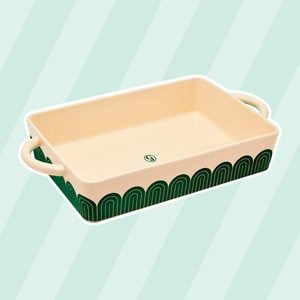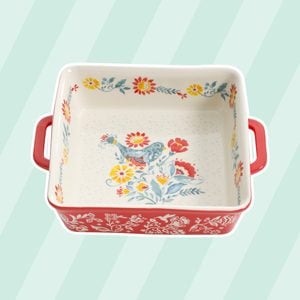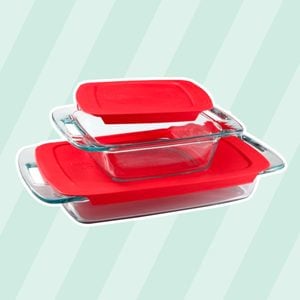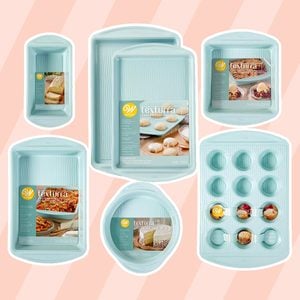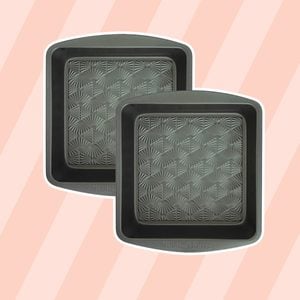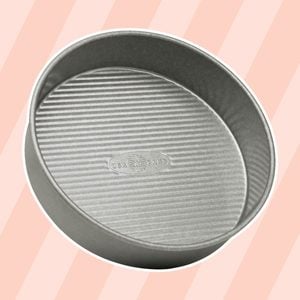This Is the Difference Between a Baking Dish and Baking Pan
Updated: Aug. 12, 2021
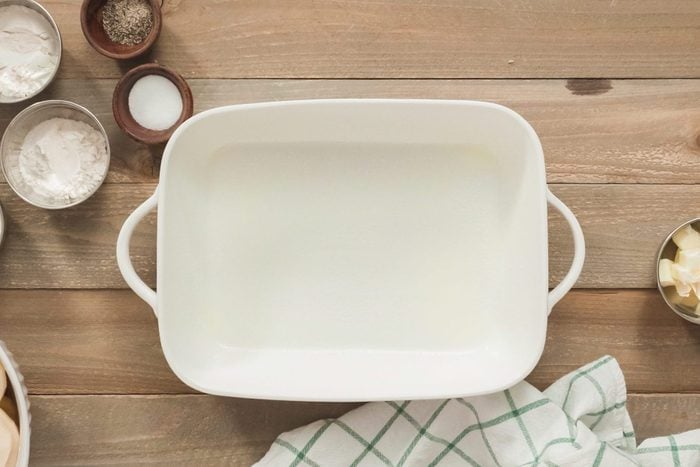
Whipping up a cake? Dishing up a casserole? There's a perfect baking dish or pan for each recipe.
Our editors and experts handpick every product we feature. We may earn a commission from your purchases.
When you’re diving into a recipe, it’s always important to look at the ingredients. Checking to make sure you have everything on hand can make or break a dish. But is it just as important to take a look at the required bakeware for the recipe? The short answer—yes. Depending on what you’re making, there certainly is a difference between a baking dish and a baking pan. Here’s what you need to know to choose the right one.
What’s a Baking Dish?
The term “baking dish” typically refers to an oven-safe rectangular dish made out of glass, stoneware or porcelain. Baking dishes also come in oval and square shapes, and they vary in size and depth.
Glass, stoneware and porcelain don’t conduct heat very well, so they take a while to heat up. But once hot, a baking dish will distribute heat more evenly. It’s also important to remember that a baking dish has the ability to shatter. Be sure you’re not putting a cold baking dish in a hot oven or using the broil setting to add intense heat.
What’s a Baking Dish Best For?
Reserve baking dishes for desserts such as fruit crisps, cobblers and bread pudding. A baking dish is also perfect for savory dishes such as casseroles, potatoes au gratin, enchiladas and quiche.
What’s a Baking Pan?
A baking pan refers to bakeware made out of metal, often aluminum. Aluminum is one of the best metal options for conducting heat, so the pan gets hot quickly. As the pan heats up, it transfers the heat to what you’re baking. Baking pans can withstand higher temps and come in a huge variety of shapes and sizes, including multiple sizes of rounds, squares, rectangles, Bundts and cupcake pans.
What’s a Baking Pan Best For?
Because of its heat conductivity, a baking pan is great for recipes when you need a bit of browning. Most commonly, a baking pan will be used for cakes, but you can also use a baking pan for treats such as brownies, muffins and breads. Use baking pans for savory items such as meatloaf and roast vegetables as well.
Just be sure to consider acidity when making your decision. If your dish includes acidic fruits or vegetables, which can react with metal, consider making the switch to a baking dish for best results.
Here’s one final note from the Taste of Home Test Kitchen: If a recipe calls for a baking pan, we mean for the pan to be metal. If we call for a baking dish, it should be glass or ceramic.

